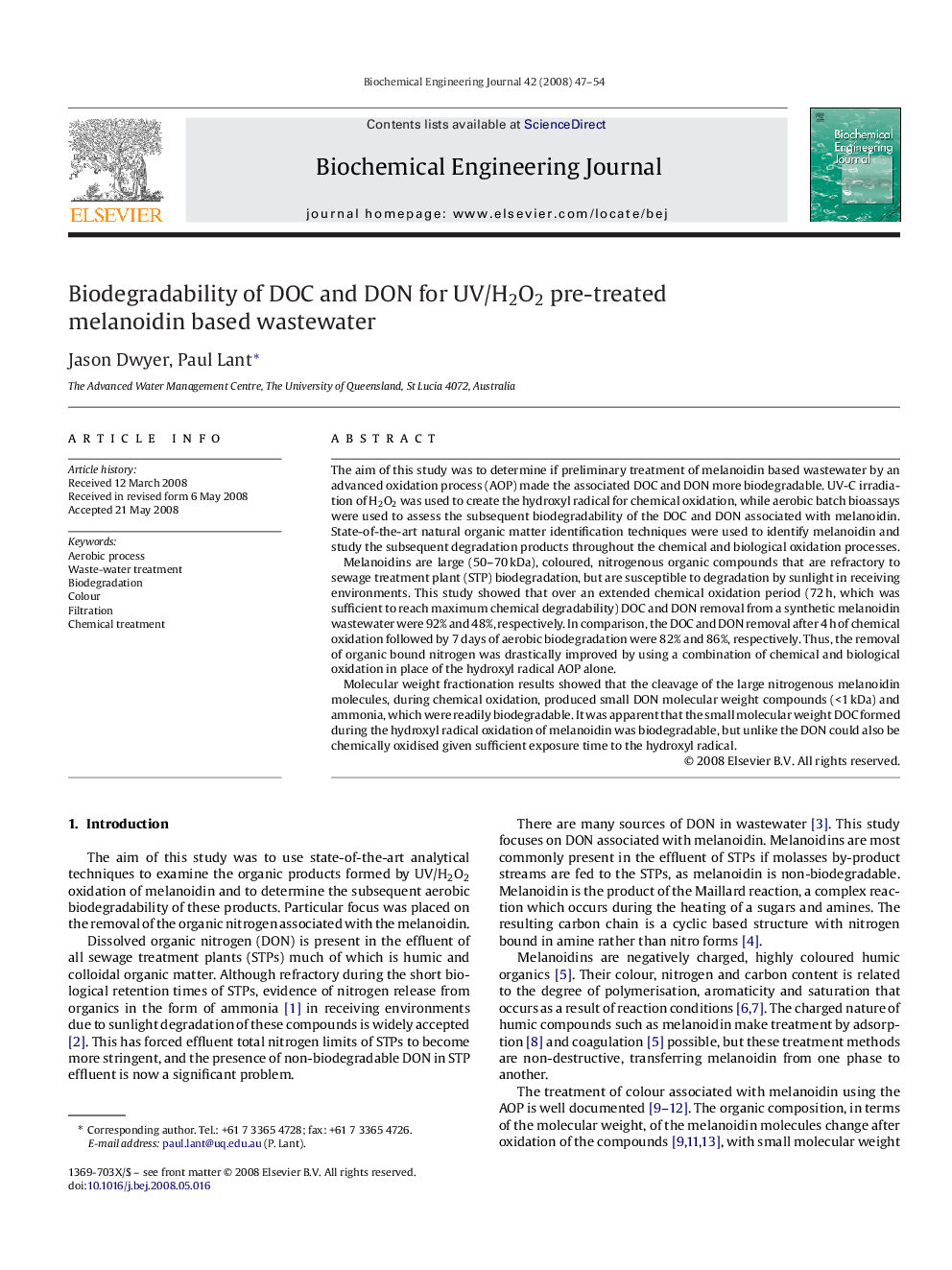| Article ID | Journal | Published Year | Pages | File Type |
|---|---|---|---|---|
| 4017 | Biochemical Engineering Journal | 2008 | 8 Pages |
The aim of this study was to determine if preliminary treatment of melanoidin based wastewater by an advanced oxidation process (AOP) made the associated DOC and DON more biodegradable. UV-C irradiation of H2O2 was used to create the hydroxyl radical for chemical oxidation, while aerobic batch bioassays were used to assess the subsequent biodegradability of the DOC and DON associated with melanoidin. State-of-the-art natural organic matter identification techniques were used to identify melanoidin and study the subsequent degradation products throughout the chemical and biological oxidation processes.Melanoidins are large (50–70 kDa), coloured, nitrogenous organic compounds that are refractory to sewage treatment plant (STP) biodegradation, but are susceptible to degradation by sunlight in receiving environments. This study showed that over an extended chemical oxidation period (72 h, which was sufficient to reach maximum chemical degradability) DOC and DON removal from a synthetic melanoidin wastewater were 92% and 48%, respectively. In comparison, the DOC and DON removal after 4 h of chemical oxidation followed by 7 days of aerobic biodegradation were 82% and 86%, respectively. Thus, the removal of organic bound nitrogen was drastically improved by using a combination of chemical and biological oxidation in place of the hydroxyl radical AOP alone.Molecular weight fractionation results showed that the cleavage of the large nitrogenous melanoidin molecules, during chemical oxidation, produced small DON molecular weight compounds (<1 kDa) and ammonia, which were readily biodegradable. It was apparent that the small molecular weight DOC formed during the hydroxyl radical oxidation of melanoidin was biodegradable, but unlike the DON could also be chemically oxidised given sufficient exposure time to the hydroxyl radical.
